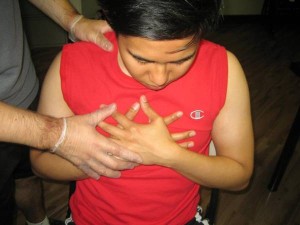Pulmonary edema is characterized by fluid-filled lungs. Once this condition occurs, the body struggles to get sufficient oxygen and shortness of breath arises. The overall outlook of the individual improves with prompt treatment of the condition and its underlying cause.
What are the indications?
In most cases of pulmonary edema, the body struggles to acquire oxygen. This is due to amount of increasing fluid in the lungs that prevents the flow of oxygen into the bloodstream. The symptoms worsen until the fluid is removed by the doctor.
The symptoms are based on the type of pulmonary edema the individual is diagnosed with.
Long-term

The signs of this form of pulmonary edema include:
- Shortness of breath during physical activity
- Wheezing
- Difficulty breathing when lying down
- Fatigue
- Waking up at night time with breathlessness that subsides when sitting up
- Swelling in the lower part of the body
- Evident weight gain, particularly in the legs
High altitude
If pulmonary edema is brought about by high altitude sickness, the signs that might manifest include:
- Coughing
- Headache
- Fever
- Erratic, rapid heartbeat
- Shortness of breath after physical activity and during rest
- Difficulty walking uphill and on flat terrain
Management of pulmonary edema
Pulmonary edema is a serious ailment that requires prompt treatment. Remember that oxygen is the initial line of treatment. The doctor will administer 100 percent oxygen via a mask, nasal cannula or positive pressure mask.
The doctor will determine the cause of pulmonary edema and suggest the appropriate treatment for the underlying cause. Depending on the condition and root cause, the doctor might provide:
- Preload reducers – works by reducing the pressure from the fluid moving into the heart and lungs
- Afterload reducers – these drugs dilate the blood vessels to relieve pressure from the heart
- Heart medications – these drugs regulate the pulse, lower the blood pressure and lessen the pressure in the veins and arteries
- Suction catheter – this is utilized to eliminate the fluid from the lungs
- Morphine – this narcotic works by reducing anxiety and shortness of breath
More Information / Disclaimer
The information posted on this page on pulmonary edema is for learning purposes only. Learn to recognize the signs by taking a standard first aid course with Mississauga First Aid.
